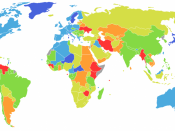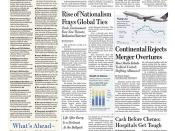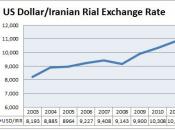Good paper good paper
The Fed and Interest Rates
Dave Pettit of The Wall Street Journal writes a daily column that
appears inside the first page of the journal's Money & Investment
section. If the headlines of Mr. Pettit's daily column are any accurate
record of economic concerns and current issues in the business world,
the late weeks of March and the early weeks of April in 1994 were
intensely concerned with interest rates. To quote, 'Industrials Edge Up
4.32 Points Amid Caution on Interest Rates,' and 'Industrials Track On
13.53 Points Despite Interest-Rate Concerns.' Why such a concern with
interest rates? A week before, in the last week of March, the Fed had
pushed up the short-term rates. This being the first increase in almost
five years, it caused quite a stir.
When the Fed decides the economy is growing at too quick a pace, or
inflation is getting out of hand, it can take actions to slow spending
and decrease the money supply.
This corresponding with the money
equation MV = PY, by lowering both M and V, P and Y can stabilize if
they are increasing too rapidly. The Fed does this by selling
securities on the open market. This, in turn, reduces bank's reserves
and forces the interest rate to rise so the banks can afford to make
loans. People seeing these rises in rates will tend to sell their low
interest assets, in order to acquire additional money, they tend move
toward higher yielding accounts, also further increasing the rate. Soon
this small change by the Fed affects all aspects of business, from the
price level to interest rates on credit cards.
Rises and falls in the interest rate can reflect many changes in an
economy. When the economy is in a recession and needs...


